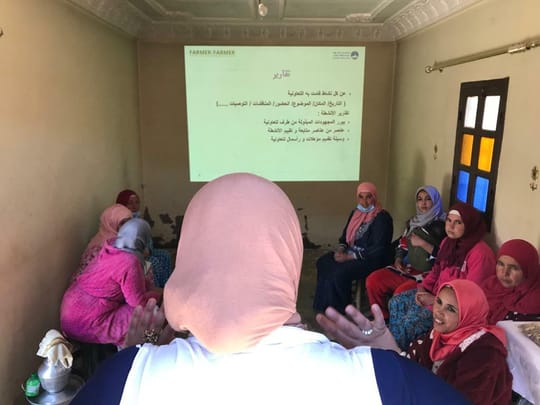The Beneficial Intersection Between Development and Human Rights

Megan Sprotte
3/3/21

The terms ‘development’ and ‘human rights’ have become of frequent use in our current society, and one might even regard them as ‘buzzwords.’ While the vast attention given to each of these terms has been a fairly recent phenomenon, the use of them in communion is an even newer occurrence. Given the freshness of this association, there remains a lot to think about when talking about the nexus of these two ideas. This paper will seek to explore the intersection of development and human rights, specifically focusing on: what each idea entails, why bringing them together is beneficial, and what remains to be asked. It will first begin with a discussion about the contemporary ideas of development and human rights.
According to the High Atlas Foundation’s Community Development Practice in Morocco handbook, development is defined as “a process that considers in its planning, economic, social, political, cultural, institutional, environmental, and technological factors to achieve its goal of generating benefits in these areas directed at all or the majority of people, especially the poor”. While there remains debate on what the exact definition of development is as well as what its goals should be, it is generally agreed that this is a multidimensional process, greatly affecting various aspects of human life through the processes of modernization. There has been a recent synthesis of development and human rights discourse at the World Conference on Human Rights in Vienna in 1993, which has legitimized development as a right rather than just an instrument of solidarity2. Before diving further into this intersection, however, a groundwork for what the basis of human rights is must be laid out.
While the idea of human rights came to the forefront of discussions in society in the years following World War II, the thoughts behind these ideas are rooted in the European natural rights philosophy and the beliefs of the age of Enlightenment in the seventeenth and eighteenth centuries2. These natural rights philosophies emphasize the ideas of perfect equality and freedom, as well as the right to preserve life and property3. Perhaps the biggest milestone in regards to human rights, however, is the Universal Declaration of Human Rights, published by the UN in 1948. The aim of this declaration is to recognize the inherent dignity and inalienable rights possessed by all human beings. In addition to this, it claims that these rights are the foundation of freedom, justice and peace in our world4. While it is true that the ideas at the core of human rights have been around for centuries, there are many other aspects of it that have continued to evolve over time, specifically the conversation surrounding the nexus of human rights and development.
Now that the necessary discussion of what each of these terms entails has taken place, this paper will turn to focus on why bringing these two ideas together is so beneficial in our current society. For decades the development enterprise lived in isolation, and perhaps ignorance of the human rights system and what its implications for development were5. Social aspects were secondary to the goal of economic growth and transformation. This was counterproductive because development and human rights operate increasingly within the same subject areas, sharing a basic notion of justice and dignity, as well as a common interest in regulating power and participation2. A rights-based approach to development means empowering marginalized groups, challenging oppression and exclusion, and changing power relations. Thus, the intersection of these two ideas ensures that the process by which development aims are pursued respect and fulfill fundamental aspects of human rights5.Furthermore, by adopting this rights-based approach to development those engaging in development projects, such as non-profits and NGOs, are held accountable to the standards of a broader community of states and agencies that advocate for these rights6.
In the context of Morocco, human rights and development have frequently come together in the form of women’s empowerment. In this country, specifically in rural areas, women are often forced to leave school at a premature age due to both physical and financial difficulties. In addition to this, women in general are given less rights than men, which violates their justice and dignity, two concepts that are central to the notion of human rights. In recent years, however, women empowerment initiatives in this country have aimed to change this by giving women a voice in this battle against traditional cultural and gender norms. The Moudawana, or Moroccan family code, has taken on new developments to greater emphasize the importance of women’s rights and gender equality. While this is undoubtedly a step in the right direction, there still remains great improvements to be made through the context of development and human rights. Development projects in Morocco must continue to emphasize gender equality in order for the inherent dignity of all humans to be honored.
While there are undoubtedly benefits to be had from bringing these two ideas together, this simple convergence is not the complete answer to the problems of the third world. For starters, one must wonder how exactly NGOs and non-profits are to be held accountable in their pursuit of a rights-based approach? A case by case analysis seems too time consuming, yet surely there is no one size fits all rubric for development. Another potential problem that arises is whether this integration must be a complete or simply a partial merge of ideas. Would too much be lost by trying to integrate fully two traditions of thought and work that have each had their own distinct course of evolution? This paper has explored the history of each of these ideas, as well as the potential benefits of their union; however, it has also aimed to emphasize that problems, as well as gray areas, still arise in the discussion of these two ideas, and much work remains to be done in order to increase the potential benefit of their intersection.